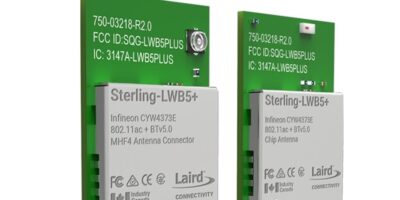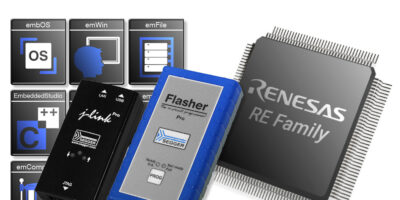Ready for distribution at Mouser Electronics is the new Sterling-LWB5+ modules from Laird Connectivity.
The modules deliver wi-fi 5 (802.11ac) and Bluetooth 5.1 communications to next-generation Internet of Things (IoT) devices such as battery-powered medical devices, industrial IoT sensors, rugged handheld devices, and other connectivity solutions.
The Laird Connectivity Sterling-LWB5+ modules are powered by the Infineon CYW4373E solution, supporting reliable and secure performance in industrial IoT settings, says Mouser. Suitable for harsh environments, the Sterling-LWB5+ modules have a solder-down module form factor to minimise the effects of vibration and impacts, as well as an industrial temperature rating of -40 to +85 degrees celsius.
The Sterling LWB5+ range provides for several small-form-factor PCB modules with options for integrated and pre-certified external antennas, as well as a couple of M.2 form factor solutions for increased host integration flexibility for designers’ Linux platforms.
For optimum integration Laird Connectivity has also produced and certified a range of internal and external antennas, along with a reverse polarity SMA cable assembly specifically for Sterling-LWB5+ modules. The antenna range includes the proven internal FlexPifa, Nanoblade and Mini Nanoblade Flex antennas as well as an external dipole antenna.
The modules support the latest WPA3 security standards, and the devices’ integrated power amplifier and low-noise amplifier aid reliable connectivity even in challenging RF environments.
The Sterling-LWB5+ devices are available in multiple antenna options and are certified to FCC, IC, CE, MIC, AS/NZ and Bluetooth SIG certification.
Mouser Electronics is an authorised semiconductor and electronic component distributor focused on new product introductions from its leading manufacturer partners. Serving the global electronic design engineer and buyer community, its website is available in multiple languages and currencies and features more than five million products from over 1,100 manufacturer brands.
Mouser offers 27 support locations worldwide. The distributor ships to more than 630,000 customers in 223 countries and territories.







